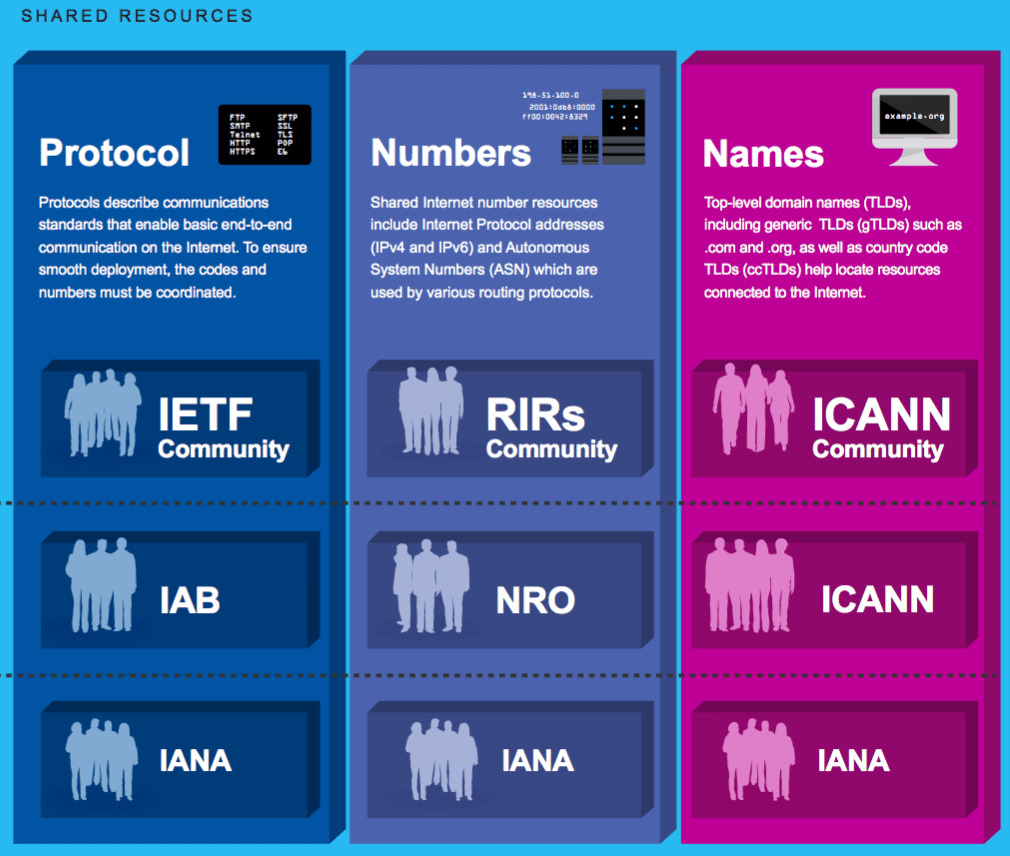On Friday, 14 March 2014, the U.S. Department of Commerce National Telecommunications and Information Administration (NTIA) announced its intention to transition the IANA functions to the global multistakeholder community. As expected, the announcement has sent adrenaline coursing through the veins of Internet governance experts and government policy people the world over. I’d argue, however, that it is an important point for the Internet’s technical experts to sit up and take notice, as well: the fact that you are probably saying “what problem does this solve?” is a testimony to how much works well today, and we want to make sure it continues to work well in any future arrangements.
First of all — do you remember where the Internet Assigned Numbers Authority started? Vint Cerf wrote, in RFC2468 (two-four-six-eight):
“Out of the chaos of new ideas for communication, the experiments, the
tentative designs, and crucible of testing, there emerged a
cornucopia of networks. Beginning with the ARPANET, an endless
stream of networks evolved, and ultimately were interlinked to become
the Internet. Someone had to keep track of all the protocols, the
identifiers, networks and addresses and ultimately the names of all
the things in the networked universe. And someone had to keep track
of all the information that erupted with volcanic force from the
intensity of the debates and discussions and endless invention that
has continued unabated for 30 years. That someone was Jonathan B.
Postel, our Internet Assigned Numbers Authority[…] “
Forty-odd years later, the task that one person took on has evolved into a multi-organizational, global, community-driven effort, based on open and transparent processes to develop policy, provide oversight, and implement the processes for managing shared Internet resources.
It’s a pretty big elephant, and your view of the IANA space depends very much on where you touch it.
If you’re a network operator, you know you get your IP addresses (IPv6, right? ;-)) from your Regional Internet Registry (RIR). You know there are processes and allocation and assignment policies that shape what constitutes a reasonable request and what isn’t allowed. Those policies are developed in open, transparent policy processes in the five RIRs around the globe. All of that is actually part of the bigger picture of the IANA-as-global-coordinated-effort.
For a reliable, global Domain Name System you need to be confident in the continued integrity and accessibility of the DNS, from its root downwards. Today, it is a reasonable expectation that any needed and authorized updates for Top Level Domains (generic or country code) are made in the root zone and propagated to the root servers uniformly and within reasonable delay.
And, finally – if you implement or otherwise use Internet standards, you rely on the work of the Internet Engineering Task Force and the rest of its protocol parameter registries. Every Internet protocol that requires a list of values (set by IETF actions, or chosen by protocol implementers) requires a registry to maintain the list. That’s everything from assigned port numbers for individual protocols to agreed-upon labels for services. While the contents of those registries are generally less contentious than some names or numbering issues, they are a critical part of making sure that Internet standards can be implemented and used interoperably, and thus imperative to the IETF’s continued efforts. For more details on how that all works, see Thomas Narten’s recent article in the IETF Journal – http://www.internetsociety.org/publications/ietf-journal-march-2014/ietf-view-iana.
With so much that is working well now, it’s easy enough to get lost in the focus of news media. But, the bottom line is that this is not about a government letting go of the Internet, as headlines would have you believe – rather, it’s about removing the footnote on the second page of the “Shared Internet Resources” diagram that explains that some IANA functions are carried out under contract assigned by the US Government. The important thing now is to ensure that whatever replaces that footnote is consistent with the principles that have allowed the Internet to flourish to date, and continues to provide the secure and stable functioning we enjoy today.
As noted in RFC2468, we appreciated IANA-the-person. I hope this description helps solidify your appreciation for IANA-in-the-large, and that you care about the outcome of this transition process. As we’ve said before, the Internet requires collaboration and collective stewardship of shared resources.
So, get involved! The multistakeholder model of the IETF, ICANN, the RIRs, and other Internet organizations requires individual participation at all levels in open, transparent processes. Attend meetings (either in person or remotely), join and participate in relevant mailing list discussions, and stay informed about what is happening in the industry. It is only with *your* participation that the future of the Internet will remain secure.
P.S.: Since I mentioned Jon Postel, let me put a plug in for the Jonathan B. Postel Service award – nominations open until 7 May 2014!

